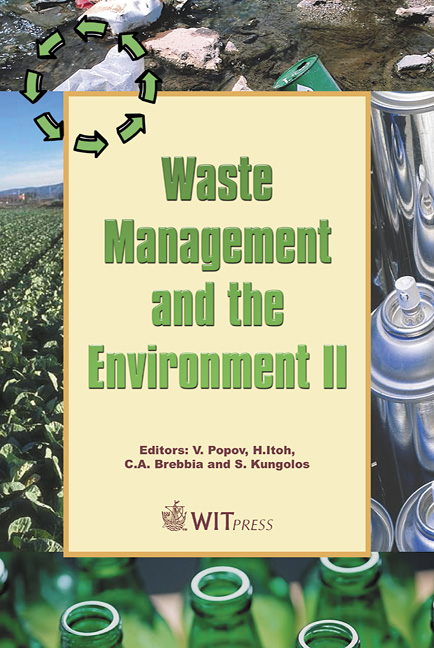Remediation Of Soils Polluted By Industrial Activities Utilizing Hydrothermally Treated Calcareous Fly Ashes
Price
Free (open access)
Transaction
Volume
78
Pages
9
Published
2004
Size
254 kb
Paper DOI
10.2495/WM040281
Copyright
WIT Press
Author(s)
A. Moutsatsou, A. Karathanasis & V. Protonotarios
Abstract
The current research investigates the effect of treated fly ash as a synthesized zeolite on remediating soils polluted with a variety of heavy metals and metalloids (As, Pb, Cu, Zn, Fe and Mn). In particular, 4 types of ‘zeolites’ were synthesized by hydrothermal treatment, using sodium hydroxide solution, of a calcareous fly ash derived from Lignite-Fired Power Plants (Ptolemaida and Megalopolis Stations, Greece): two with excess of sodium hydroxide in a solid/liquid ratio of 50g L-1 and two with excess of fly ash in a solid/liquid ratio of 100g L-1. Soil samples were obtained from a former mining site at the city of Lavrion, Greece. Mobilization and transfer of metals to the retention agents was undertaken using HCl aq 1M and Na2EDTA 0.1M. Retention results were satisfactory with respect to As, Pb, Cu, Mn. The different metal formations in contaminated soil were found to be of major importance for the effectiveness of the overall process. Another important factor was found to be the soil-solventadditive interaction and the pH of the final liquid and solid products. The latter were solidified either on their own, or by utilizing additives such as lime and cement. Keywords: soil pollution, metals, metalloids, soil washing, lignite fly ash, alkaline activation, synthesized zeolites. 1 Introduction Metals and metalloids such as Pb, As, Cu, Zn, Fe and Mn have been recognized as an important environmental hazard, primarily in the area of public health
Keywords
soil pollution, metals, metalloids, soil washing, lignite fly ash, alkaline activation, synthesized zeolites.





